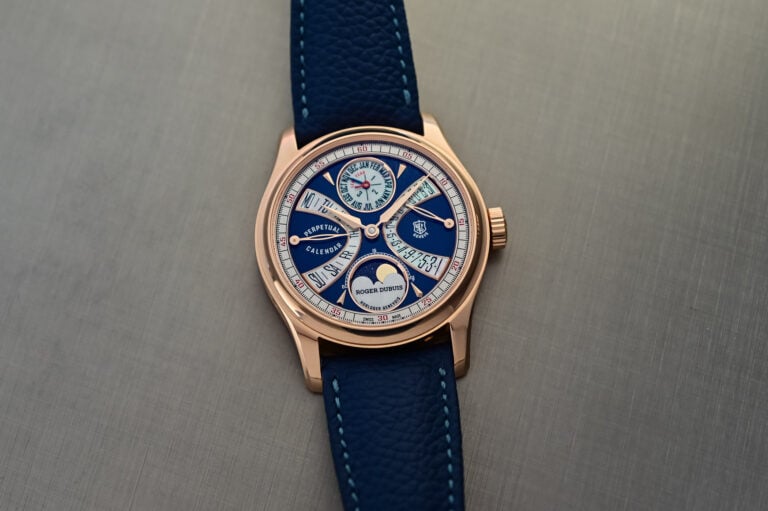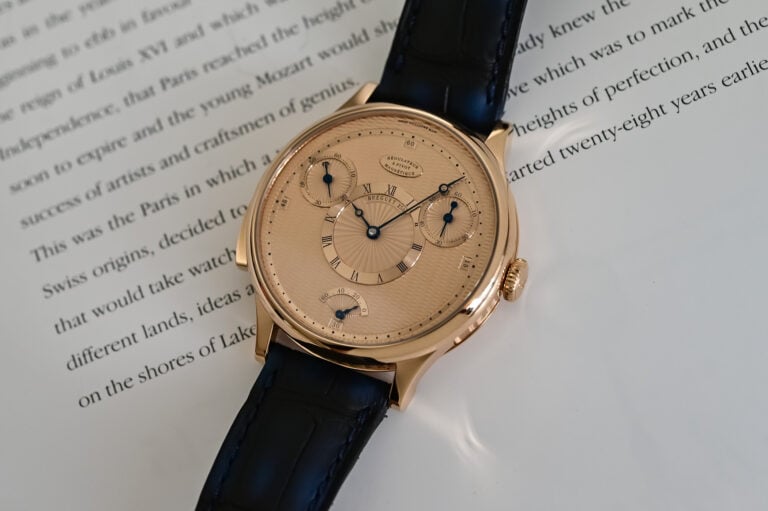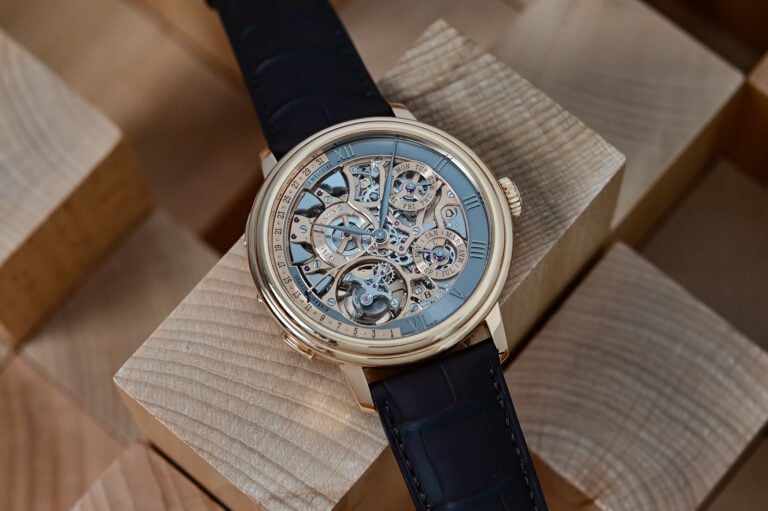A radioactive metal used as luminescent paint on watch hands and dials in the early 20th century. It has long been replaced with safe luminescence.
A specialized tool watch for professional railroad workers and engineers that are highly accurate and legible to ensure timely operations and avoid accidents and collisions. Strict standards were first established in 1893 and have increased over the decades as technology has improved.
A gear on top of the barrel that’s attached to its arbor with a screw. When winding a watch, the ratchet wheel is turned to tighten the coil of the mainspring.
A chronograph with an additional seconds hand (and pusher) that can time two events simultaneously that start together, but end at different times (a race, for example). When the timer is activated, both seconds hands move together superimposed, but one stops when a pusher is hit while the other continues. Also known as a split seconds chronograph.
The balance wheel and hairspring comprise the regulating organ of a watch, where the oscillation of the balance wheel is regulated by the hairspring.
A watch or clock where all hands are in separate registers with the minute hand usually largest and centralized. This goes back hundreds of years when watchmakers used master clocks to set their timepieces. These “regulator” clocks had a central minute hand with the others pushed out of the way in smaller registers as minutes were the most important for the task.
A complication where a hammer and gong within the movement chimes the hours, and often the quarters and minutes as well, depending on the type of repeater (see minute repeater and quarter repeater).
A watch that has two balance wheels instead of one, which oscillate in resonance with each other in opposite directions to continuously average out errors for maximum accuracy. The synchronized balance wheels find a concurrent rhythm as they’re coupled by the tiny vibrations in the spring.
A chronograph that can be reset and restarted with one click, without needing to first stop, then reset and start again like a standard chronograph. Also known as a flyback chronograph.
A display on the dial where a hand moves along an arc instead of in a full circle, bouncing back to the beginning to start again when the end is reached. It’s commonly used to indicate hours, minutes, seconds or the date.
An alloy of yellow gold, silver, and copper, in which the latter two metals result in a pinkish color. Also known as pink gold.
Either an external or internal bezel with a numeric scale that rotates for a specific timekeeping task. The most common type is an external rotating bezel on a dive watch to track a diver’s air supply.
A specially balanced weight connected to automatic movements that rotates freely with the movement of the wearer’s wrist. This continuously winds the mainspring and keeps the watch running without the need for manual winding. Also known as an oscillating weight.



